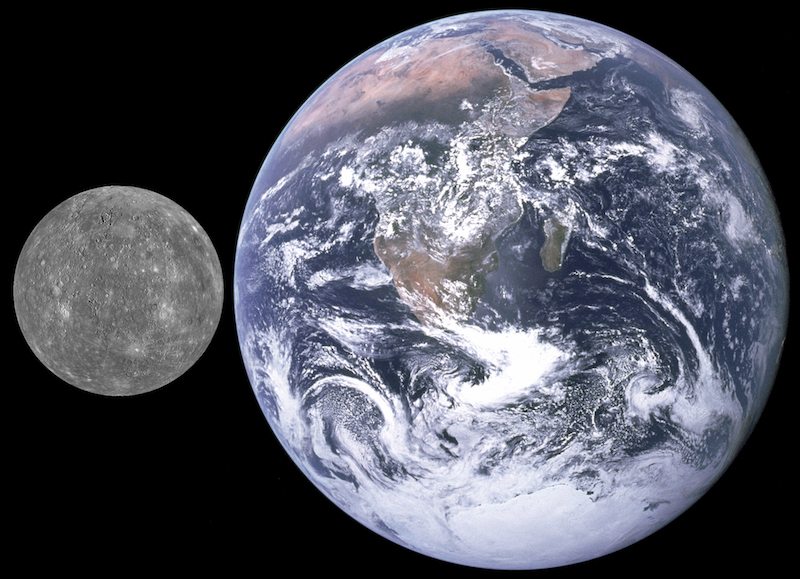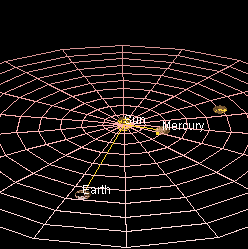Mercury
Episode #1 of the course Introduction to the Solar System
As a planet, Mercury has made a name for itself in a number of ways. It is the closest planet to the Sun, the smallest planet in the Solar System, and has captivated scientists thanks to its abundant ice water deposits.
Measuring in at just two-fifths the size of Earth with a diameter of 3,031 miles (4,878 km) – approximately the width of the United States – Mercury is the smallest planet in the solar system, but it is also the second densest (after Earth). As one of the four terrestrial planets, scientists believe that Mercury is composed of nearly two-thirds metallic materials and one-third silicon or rock. Its molten core has a high iron content and makes up 42 percent of its mass. This molten core is contained by layers of solid rock that, on the surface of the planet, exhibit a landscape similar to that of Earth’s moon, pocked by crater basins.

Size comparison of Mercury and Earth
Because Mercury is so small and its gravity so weak, the planet is unable to maintain a strong atmosphere around it in the way that Earth maintains its own atmosphere. This sparse atmosphere means that floating celestial debris—such as comets, meteors, and asteroids—don’t burn up as they are pulled into the planet’s orbit and approach the surface. For that reason, Mercury is especially susceptible to collisions, and the surface of the planet is covered in vast plains and deep craters that are wounds left over millions of years. Mercury sports one particularly impressive battle scar that scientists have determined to be the largest impact site in the solar system. It is known as the Caloris Basin and is 800 miles (1,287 km) in diameter.

Perspective view of Caloris Basin – high (red); low (blue)
Mercury’s lack of atmosphere also means that the planet has virtually no weather, clouds, or gusts of wind to kick up dirt on the surface. It does, however, experience extremely sunny days, being the closest planet to the Sun at a distance of just 28.5-43.5 million miles (48.8-70 million km) due to its elliptical orbit. As a result, Mercury receives sunlight that is 6.5 times more intense than that received on the surface of Earth.
Despite the intense surface heat, radar data suggests that permanently frozen water may be residing in what scientists refer to as shadowed polar craters. Even though water has been found on Mercury, life on the planet is impossible without an atmosphere to protect against other elements.

Water ice (yellow) at Mercury’s north polar region
Because Mercury’s orbit is in such close proximity to the Sun, it is more difficult to see than some of the other planets in our solar system. The earliest records of its discovery date back to around 3,000 BC to the time of the Sumerians, and the name Mercury comes from the Roman god believed to be the messenger among the gods and protector of travelers. That’s appropriate, given that when it comes to traveling, Mercury completes its orbit around the Sun every 88 days—faster than any other planet.

Animation of Mercury’s and Earth’s revolution around the Sun
Recommended book
Share with friends

